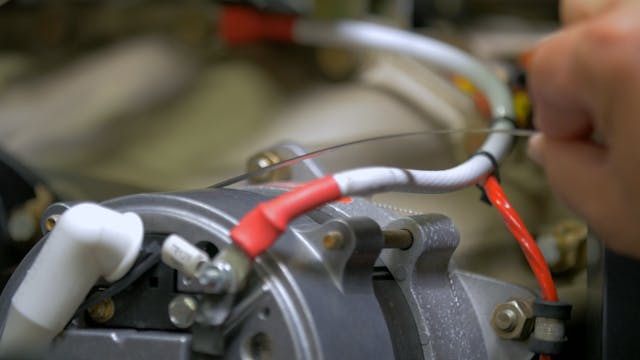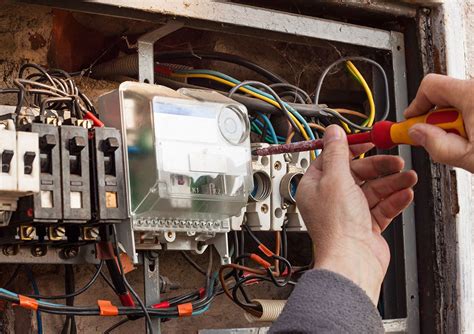Enhance operations with professional mechanical system optimisation support.
Enhance operations with professional mechanical system optimisation support.
Blog Article
Leading Tips for Effective Electric System Troubleshooting
Repairing electric systems requires a methodical approach, based in a thorough understanding of electrical principles and security protocols. By familiarizing oneself with circuit components, utilizing vital tools, and sticking to an organized evaluation method, specialists can effectively identify and deal with concerns. The subtleties of effective troubleshooting prolong past mere technological expertise; comprehending how to document findings and focus on safety and security can considerably affect results. As we explore these important elements better, it becomes clear that understanding this procedure is not just helpful but essential for success in the field.
Understand the Basics
Comprehending the fundamentals of electric systems is crucial for effective troubleshooting, as a strong structure enables professionals to identify and settle issues much more successfully. An extensive understanding of electrical principles, such as voltage, existing, resistance, and power, is important in determining the origin creates of problems. Voltage is the electric prospective difference that drives existing via a circuit, while resistance opposes the circulation of present, impacting the total capability of the system.
Experience with circuit parts, including resistors, capacitors, diodes, and switches, is additionally vital. Each element plays a distinctive duty in circuit actions and can impact efficiency when malfunctioning. Furthermore, understanding series and parallel circuit arrangements is crucial, as these setups affect the circulation of voltage and existing within the system.
Specialists need to be mindful of potential threats, such as shock and brief circuits, to execute secure troubleshooting practices. By mastering these foundational principles, professionals enhance their ability to perform effective diagnostics and repair services, eventually leading to improved efficiency and reliability of electrical systems (electrical system troubleshooting).
Gather Necessary Devices
Reliable troubleshooting of electrical systems calls for the appropriate collection of devices to identify and settle issues precisely. Necessary tools include a multimeter, which measures voltage, present, and resistance, permitting for precise examinations of electric components.
Furthermore, shielded hand tools such as screwdrivers, pliers, and cord pole dancers are important for safely manipulating electric connections. It is additionally a good idea to have a circuit tester on hand to verify the presence of voltage in electrical outlets and cords. For even more complicated systems, a thermal imaging cam can aid detect overheating components, showing possible failures.

Adhere To a Methodical Approach
Having collected the proper tools, the next action in troubleshooting electric systems is to adhere to a methodical technique. A systematic approach ensures that specialists can determine faults effectively and properly, decreasing downtime and preventing unnecessary fixings.
Begin by evaluating the system's schematic layouts and specs. This involves checking each part methodically, beginning from the power resource and functioning in the direction of the lots.
Utilize screening equipment, such as multimeters and oscilloscopes, to collect objective data concerning voltage, existing, and resistance at various points within the system. This empirical proof will guide your troubleshooting initiatives and help to validate or eliminate prospective reasons for failing.
In addition, think about environmental elements that may affect the system's efficiency, such as temperature changes or moisture ingress. An extensive inspection of wiring, connections, and components will make sure that all opportunities are accounted for.
Document Your Searchings For
Comprehensive paperwork is essential in the troubleshooting process of electrical systems. Precise records improve the effectiveness of identifying recurring issues and assist in interaction among staff member. Each finding must be diligently noted, consisting of signs observed, tests performed, and the results of those examinations. electrical system troubleshooting. This method not only help in comprehending the origin cause of the problem but additionally functions as a recommendation for future fixing initiatives.

In addition, keeping a log of components changed or repair services performed is vital. This info sustains stock administration and can assist evaluate the durability and dependability of particular components.
Ultimately, the documents process ought to be extensive yet concise, enabling simple access and evaluation - electrical system troubleshooting. By focusing on in-depth documents, service technicians can produce a useful data base that not only help in current troubleshooting yet likewise encourages future maintenance efforts, thus boosting overall system dependability

Prioritize Safety And Security Measures
Acknowledging the integral risks related to electrical systems is important for he said making sure safety during troubleshooting. Electric shock, burns, and tools damage are just a few of the possible dangers that service technicians encounter. Prioritizing security procedures is not only a lawful obligation but likewise an ethical essential that safeguards both the technician and the surrounding environment.
Before commencing any troubleshooting task, specialists should put on appropriate individual safety devices (PPE), including insulated handwear covers, shatterproof glass, and flame-resistant clothing. Guaranteeing that the workplace is dry and devoid of clutter can significantly lower the threat of mishaps. It is essential to de-energize circuits prior to beginning any job, verifying that they are not live with the use of a multimeter or voltage tester.
Developing clear interaction protocols with staff member is also vital; this ensures that everybody recognizes possible dangers and the status of the electrical system being dealt with. Lastly, having an emergency action plan in place can prove very useful in case of an occurrence. By focusing on security actions, specialists can effectively mitigate risks and foster a safer workplace.
Verdict
Efficient electrical system repairing relies upon an extensive understanding of fundamental concepts and a methodical technique. By gathering Continue necessary devices, sticking to systematic examination techniques, and diligently recording searchings for, the troubleshooting procedure comes to be more effective and reputable. Focusing on safety actions makes sure the well-being of individuals included and the stability of the electric system. Carrying out these methods will improve the troubleshooting experience, resulting in quicker resolutions and improved operational performance in electrical systems.
Report this page